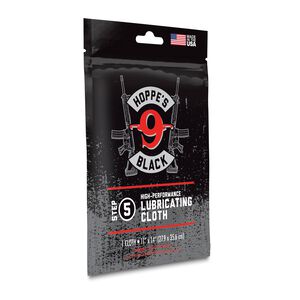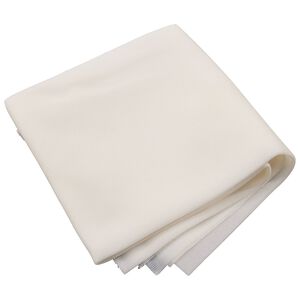Gun Maintenance Tips: How to Clean a Glock 17
Cleaning your gun is an essential part of its maintenance and can help keep your piece functional for much longer. However, each piece is different, and your cleaning cycle will vary based on an array of factors, such as how frequently you use it, dust, and humidity levels.
As such, it is essential to determine the ideal cleaning schedule based on your needs. Below, we explore how to clean a Glock 17, including maintenance tips to help you get more from your piece while ensuring safety.
Before You Start Cleaning
If you use your Glock regularly, it is advisable to clean after every use, or at least twice a month if it's your EDC (everyday carry). We recommend using Hoppe's gun cleaning products, which are the best in the industry. You can find everything you need, including the pistol rod, cleaning brush, gun cleaner, lubricating oil, and patches.
There are a few things to do before you start cleaning your Glock 17, to ensure the process is safe and smooth. These include:
Clear the Glock
Remove all ammunition and store it in a safe place away from your work area. Rack the slide several times after removing the magazine and manually inspect the chamber to make sure it is clear of any ammo. The next step is to point the gun away safely and pull the trigger (dry fire) to confirm it is empty.
Take the Glock Apart
Grab the top of the slide and pull back slightly, right underneath the beavertail, to expose the slide release tabs. Pull them down to take the slider off. Put the frame away and pop out the recoil spring assembly. Pick up the barrel by pushing forward a little bit and back to lift it. You should have the following pieces:
- The slide
- Barrel
- Recoil spring assembly (including guide rod)
- Frame
How to Clean Your Glock 17
The process involves cleaning each part separately. Here's the step by step guide for cleaning everything you have just taken apart.
The Barrel
The barrel contains the most dirt, which includes carbon and grime buildup.
To clean the barrel, attach a dry brush to the pistol rod and run it through the chamber. Next, you should apply Hoppe's gun cleaner on a patch and slide it through the barrel a couple of times. Then, attach a foster bronze brush to the rod and send that through the barrel's chamber.
Remove the bronze brush, attach a patch (wet with Hoppe's gun cleaner) to the pistol rod and run through the barrel's chamber. Repeat the process using a dry patch to remove the cleanser.
Add Hoppe's lubricating gun oil on a patch and run it through the barrel's inside chambers using your pistol rod. Once you are sure the inside is clean and lubricated, apply more Hoppe's lubricating oil to a patch to clean and lubricate the external section, while inspecting it for any dirt buildup. Place the barrel on a clean surface.
The Slide Recoil Spring and Guide Rod
Begin by using a brush to clean the slide rail cuts and other parts to remove dirt and buildup. Apply Hoppe's lubricant to a patch and wipe down the slide's inside and outside until it looks and feels clean.
Apply a drop of lubricant to the back ends of the slide rail cuts and set it down in a vertical position, so the lubricant runs down the entire length of the slide. Use a lubricated patch to wipe down the surface of the recoil and guide rod.
The Frame
Just like the slide, begin by brushing the frame's interior and exterior surface using a small gun cleaning brush. Next, wipe down the cleaned surfaces using a patch wet with Hoppe's gun lubricant.
Once clean, add a drop of lubricant to the end of the trigger bar. Take another patch with lubricant oil to clean the rear frame of the gun.
Reassemble the Gun
Once every part is clean and lubricated, reassemble your Glock 17 by first inserting the barrel, the recoil spring assembly, and the slider back on to the frame. Next, function-test your gun by clearing it to make sure it is empty, pointing to a safe direction, and pulling the trigger twice or thrice to make sure it is functioning correctly.
Glock 17 Maintenance and Cleaning Tips
Learning how to clean a Glock is vital if you want your gun to function correctly and last longer. Cleaning also involves lubrication and inspection, which are crucial for maintenance. Here are some essential cleaning and maintenance tips to help you achieve the best results.
Find Reliable Cleaning Kits
It is crucial to buy the best cleaning kit for your pistol. Each gun is different, and some may require additional tools to remove all dirt buildup. Hoppe's has been around since 1903, and their products are the ideal solution for all your firearm cleaning needs.
Follow Manufacturer Manuals
Each Glock comes with a manufacturer manual for safety, cleaning, maintenance, and use. It will help if you read all sections in the manual to know how to use, clean, and store the gun. We advise referring to the manual for disassembling your Glock 17 if you run through any troubles.
Clean Your Glock on as Needed Basis
Some users clean their guns after 500 or 1000 rounds, while others strip it after heavy use. There's no specific time to strip and clean your Glock 17. Instead, determine the ideal cleaning schedule for your gun based on usage. If it looks dirty or feels sticky, you should probably take it apart for thorough cleaning. It is also important to clean before lubricating the gun.
Ask for Help
If you have problems stripping or cleaning your gun, there's always the chance to get help from an expert. It is safer to ask for help and clean your gun the right way than attempt to accomplish it with doubts. The priority is safety and proper Glock 17 maintenance that will keep your gun functional for many years.
Get Your Cleaning Kit Today
Cleaning a Glock 17 should be an effortless process, once you assemble everything you need. Make sure you remove all ammunition and lock it in the safe before you start cleaning.
Also, read through the information provided in the user manual to determine if you need any help cleaning and maintaining your Glock 17. Function test the gun to ensure it is working before keeping it safe as per the manufacturer's instruction.

